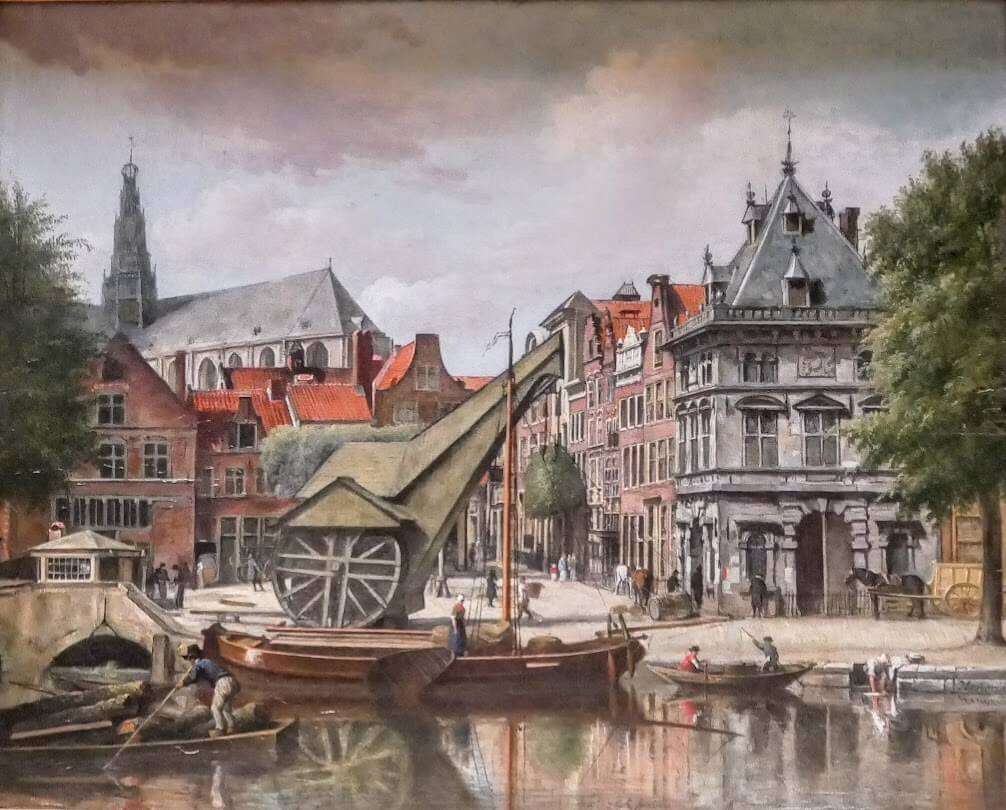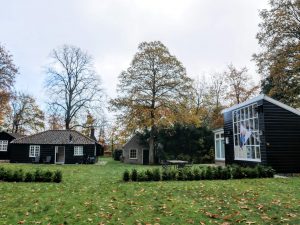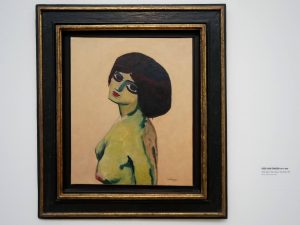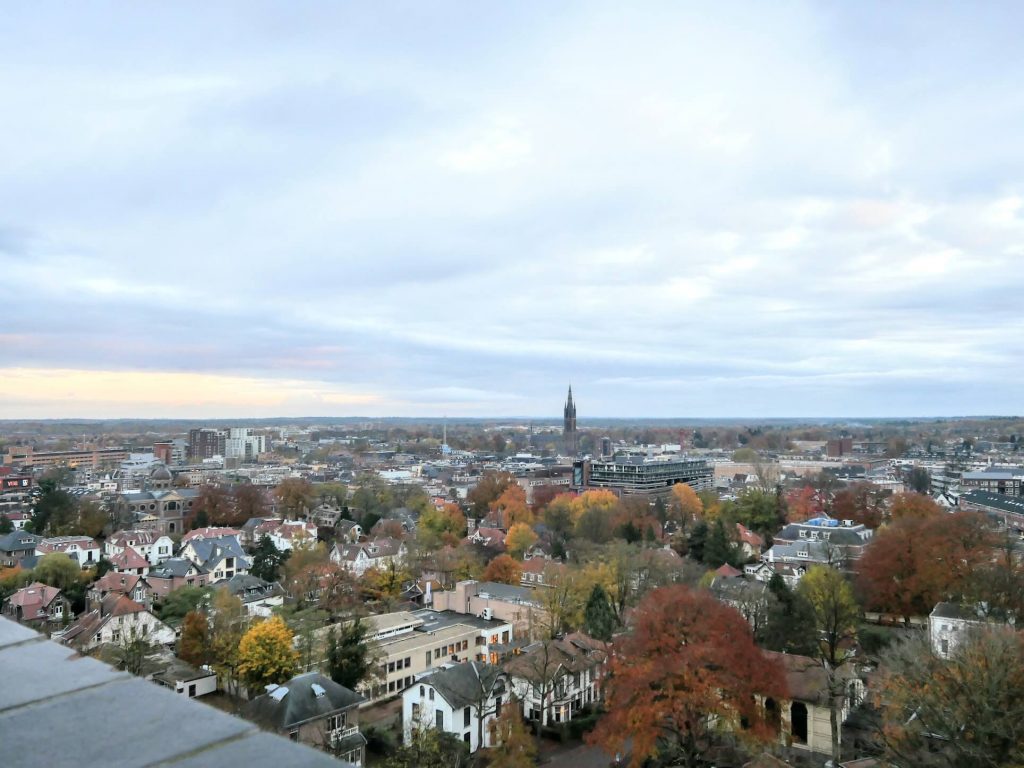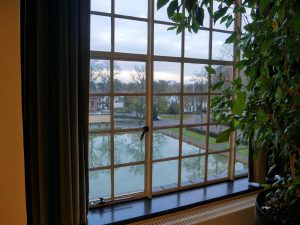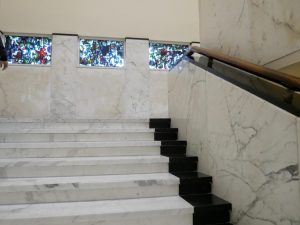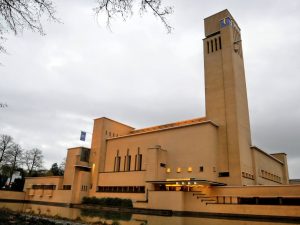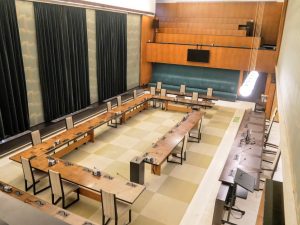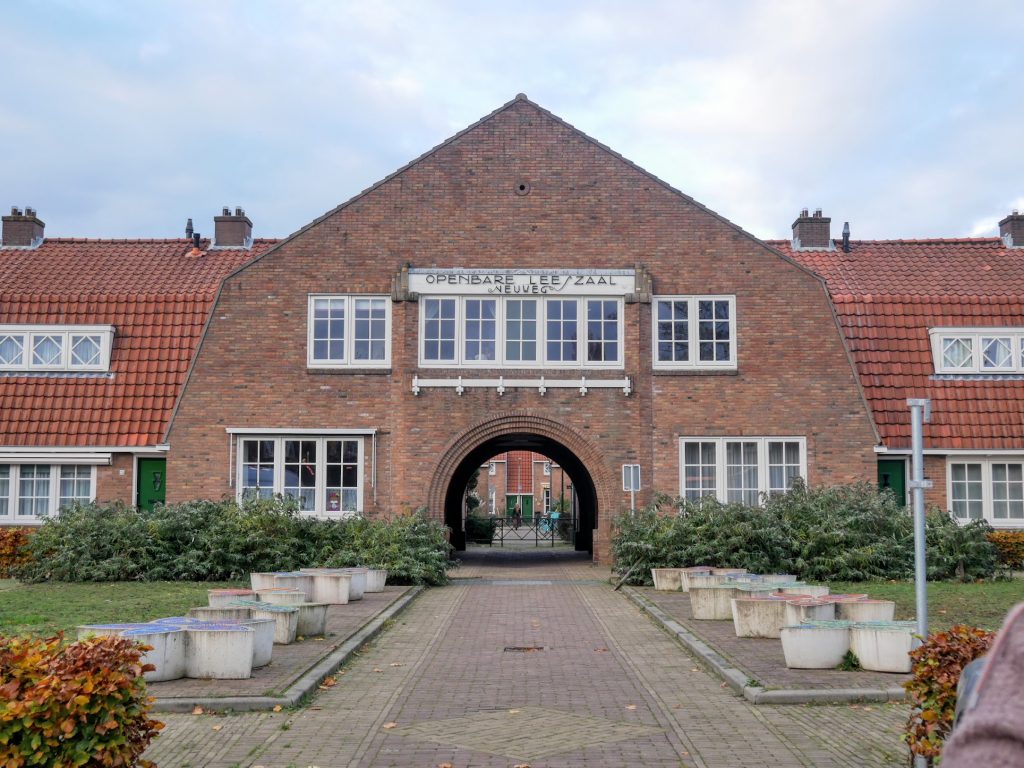Amsterdam is one of the world’s art and culture centres. Its museums like Rijksmuseum or Van Gogh Museum are homes to famous art pieces like Rembrandt‘s Night Watch, Vermeer’s Milkmaid or Van Gogh’s Sunflowers. However, if you’d like to avoid the crowds in the Dutch capital, its surrounding region is a place to go. Amsterdam area is home to some charming historic towns, fantastic museums and beautiful architecture. Find out more about what to see and do in the Amsterdam area in this article.
Why to travel outside Amsterdam during your trip to the Netherlands
Because of its numerous great museums and fantastic architecture, Amsterdam is a magnet for art enthusiasts. It’s a beautiful city, but the experience of visiting it could be ruined by too many tourists trying to see the same sites simultaneously, especially during the high season. That’s why it could be smart to expand your visit and travel a bit outside the city and explore the Amsterdam area.
However, if you’d like to explore Dutch art and architecture, visiting some other Dutch towns could be a great thing to do.
Many tourists come to Amsterdam to see some of Vermeer’s paintings in the Rijksmuseum. However, two of his famous artworks, Girl with the Pearl Earring and the View of Delft, are displayed at the Mauritshuis in Den Haag.
If you’d love to explore some of the traditional Dutch architecture, then towns like Utrecht, Haarlem or Leiden could be a great place to go. There are numerous places linked to the life and work of Vincent van Gogh in the Brabant region of the Netherlands. And some of the most impressive examples of modern Dutch architecture are located in Rotterdam.
You don’t need to travel far from Amsterdam to enjoy in some of those hidden Dutch gems. Many of them are located in the Amsterdam area, only a short train ride away from the capital.
⤷ Read more: Amsterdam Travel Guide
How to explore the Amsterdam area
⤷ By train: The Netherlands has one of the best train networks in Europe. Trains are quick, comfortable and they are departing quite often. It’s easy to travel around the country. Here is the link to the Dutch Railway website, where you can quickly look for the connections between the cities and departure times. At the entrance to each train station, you’ll find large yellow machines on which you can buy your tickets.
If you’re going to use public transport a lot during your stay, get yourself a blue OV-Chipkaart. You can buy it on the same machine and top it up with the amount of money you need. You can then use it not only for trains but for all the public transport (buses, trams, ferries) in the country.
⤷ TIP: 9292 is an excellent app for navigating public transport in the Netherlands. You can write your location and destination to which you’d like to go, and the app will provide you with the best routes to get there. Be sure to download it to your phone before your trip to the Netherlands.
⤷ By car: If you prefer exploring the Amsterdam area by car, that shouldn’t be a problem either. It’s easy to navigate around, while driving is very relaxed and calm there. Just be sure to pay attention to bicycles (cyclists are equal traffic participants in the Netherlands), and you should be completely fine.
⤷ By bicycle: With all the traffic and lots of crowds, riding a bike in Amsterdam could be a bit challenging. However, in some of these smaller towns and villages in the Amsterdam area, you can definitely enjoy that part of Dutch culture, as well. You can rent a bicycle at the train station in almost every Dutch town and explore the region around Amsterdam that way.
What to see in the Amsterdam area
Although you’ll find some fantastic architecture and museums in every corner of the Netherlands, in this article, you’ll get recommendations for some great places to visit in the Amsterdam area. All of them could be reached within 45 minutes from Amsterdam.
Haarlem
⤷ How to get there? 15 minutes by train from Amsterdam Centraal Station
⤷ Where to stay? Amrâth Grand Hotel Frans Hals
Haarlem is a charming historical town located between Amsterdam and the North Sea. It has a long past going all the way back to Prehistory. Its medieval city centre is still mainly intact and filled with some typical old Dutch houses.
Its residents who emigrated to New York during the 16th and 17th centuries (known as New Amsterdam back then) gave the name to the city’s neighbourhood Harlem. The town was an art centre during the Dutch Golden Age in the 17th century, when one of the most famous artists, Frans Hals, lived and worked there. You can see his artworks at the Frans Hals Museum in Haarlem today.
Haarlem’s central square Grote Markt is where some of its most interesting architecture is. Saint Bavo Church was built as a catholic cathedral and later converted to a protestant church. Its wooden ceiling is quite unique. Today, the church is home to graves of many notable people from Haarlem, among which Frans Hals, as well.
⤷ TIP: Each Saturday at 2 pm, you can join a guided tour around the church in English.
The Town Hall built back in the 14th century used to be home to the Counts of Holland, whose seat of power was in Haarlem. Vleeshal is a former slaughterhouse built in the 17th century. Today it’s home to Haarlem’s Archaeological Museum and the ‘Hal’ building of the Frans Hals Museum.
Archaeological Museum is one of the loveliest museums in Haarlem. Being highly interactive, it’s a great place to visit with kids in the Amsterdam area. However, it’s also great to visit for adults to meet one of the medieval citizens of Haarlem – Cornelis. And to watch some short movies about this city. You can see my favourite one on a link here.
Haarlem is also home to the oldest museum in the Netherlands – Teylers Museum. And when you visit it, you can definitely feel that lovely old historical vibe. The first part of the museum looks like the historical cabinet of curiosities. Its most unusual exhibit is the alleged peak of the highest mountain in Europe – Mont Blanc. It also has a lovely collection of paintings and drawings. Teylers Museum is definitely one of the art gems in the Amsterdam area.
One of the newest cultural spots in Haarlem was recently restored and opened to the public – Huis Bernaart. Built between 1803 and 1808, it had one of the first Empire style interiors in the Netherlands. Its architect, Abraham van der Hart paid attention to every single detail of the house. That dedication to details could still be seen in its beautiful design. The house is located on Nieuwe Gracht 7, and it’s open to the public in a way to allow the visitors to experience a bit of life in this beautiful mansion. You can have a coffee in its dining room or sit on some of the chairs from the time of Louis Bonaparte and enjoy the canal view.
There is so much to see and do in Haarlem, you can also make it a weekend trip from Amsterdam. It’s home to many nice restaurants, cosy cafes and some great local shops.
⤷ Read more: Haarlem Travel Guide
Laren
⤷ How to get there? Take train from Amsterdam to Hilversum, and a bus to Laren then. It will take you around 45 minutes to get there. Use the 9292 app for navigating public transport in the Netherlands easier.
The small town of Laren, located some thirty kilometres from Amsterdam, is in the art world equal to what Auvers-sur-Oise is to Paris. Already during the 19th century, it became a magnet for artists. Not only from the Netherlands, but from abroad, as well. With the industrial revolution happening in cities, painters looked for untouched nature. Being known for its green vast meadows and forests, the Laren area soon became a haven for many of them.
Piet Mondrian spent four years in the area during the First World War. This is where, together with some of his fellow contemporary painters, he started De Stijl movement. Some of his first world-known abstract paintings were made while he was living there. During his time in the Laren region, he lived in sixteen houses. One of them, Mondrians Hut, is preserved today and could be seen as a part of the Heritage Festival of the Dooyewaard Foundation. Check out the link here for more info.
⤷ TIP: Numerous places linked to the life and work of this famous painter could still be seen in the region of Laren. Here is the Mondrian Route that will help you discover them.
The Het Gooi region, where Laren is located, is well known for its combination of art and nature. And that could be best felt at Singer Laren Museum. I can’t believe I haven’t visited this museum during my life in the Netherlands because it’s a true art gem in the Amsterdam area. It reminded me a bit of the Kröller-Müller Museum. It’s just much cosier, and you have a feeling as you’re visiting someone’s house. Which, in a way, you are.
Singer Laren Museum is located in a former home of painter William Singer and his wife Anna, who was an art collector. The museum has a collection of modern and contemporary art with some really interesting temporary exhibitions. It has a great combination of fine art, lovely nature and some great food.
Taking a bicycle ride through Goois Natuurreservaat, having lunch at the former dining room of the Singer family, following that with a walk around the garden and exploring the museum collection, is a beautiful thing to do in the Amsterdam area. Singer Laren is a boutique museum that provides you with just the right amount of art. And allows you to sit at its cosy restaurant next to the large fireplace and contemplate about artworks you just saw afterwards.
⤷ TIP: Just across the street from the museum is a house where another famous Dutch painter, Anton Mauve, lived. He was a member of the Hague School (later the Laren School). However, you may know him as Vincent van Gogh’s uncle and teacher.
Hilversum
⤷ How to get there? 20 minutes by train from Amsterdam Centraal Station
⤷ Where to stay? Gooiland Hotel
Today, Hilversum is the centre of the Dutch media and entertainment industry. It’s also a charming historic town filled with some beautiful villas and mansions. It’s quite fancy, but with a lot of historic charm and a typical Dutch small-town vibe.
However, Hilversum is also a place where you can see some fascinating modern architecture. Here is a little overview of Hilversum modern architecture highlights.
Zonnestraal – In the first decades of the 20th century, Amsterdam was one of the world centres of diamond production. Because of the diamond dust and housing issues, tuberculosis started spreading around the town. The Diamond Union began collecting funds to build a sanatorium for tuberculosis patients treatment. This architectural complex was built in 1928 at the edge of the forest. Architects Jan Duiker and Bernard Bijvoet made a progressive new design for the building, inspired by the sea while celebrating the light.
⤷ TIP: You can make a day trip of visiting Zonnestraal. Take a walk around the Goois Natuurreservaat, have lunch at a restaurant with a lovely terrace overlooking the nature and the Zonnestraal architecture, and explore the building then.
Town Hall – The most famous building in Hilversum is its Town Hall, built by Willem Marinus Dudok in 1931. At first sight, I got an impression it was largely influenced by Italian medieval town halls. But, from a closer look, Dudok’s architecture seemed much more unique. The building is quite asymmetrical, with some of its elements looking as they are floating. The architect paid attention to every single detail in it, from designing the furniture to choosing every single marble stone himself.
Dudok Architectuur Centrum is located at its basement. It’s a great place to check for more info about that interesting architect.
⤷ TIP: If you’d like to explore more of Dudok’s architecture in Hilversum, be sure to visit Bloemenbuurt. It’s a lovely residential area of the town designed by him.
If you’re going to spend a night in Hilversum, my recommendation for anyone in love with stunning architecture is Gooiland Hotel. Built-in 1936, it was designed by Jan Duiker, the same architect who worked on Zonnestraal. The building and a hotel interior have a beautiful modern, clean design. In 1987, the hotel was renovated. To raise the money for it, the municipality sold one of Piet Mondrian’s paintings. The characteristic Mondrian’s black lines are all over the hotel to pay tribute to the famous Dutch painter.
⤷ TIP: Would you like to explore more Dutch cities filled with art and culture? Check out Maastricht, The Hague or Rotterdam.
Amsterdam area offers so much to explore. From fine arts, castles, architecture to some lovely nature. If you’re going to visit Amsterdam, be sure to explore some of the Amsterdam area, too.
I visited Amsterdam Area on a press trip organised by amsterdam&partners. Many thanks to them and their partners in Haarlem, Het Gooi, museums we visited, KLM and Radisson Blu Amsterdam, for hosting us and showing us some hidden gems in the area around Amsterdam.


